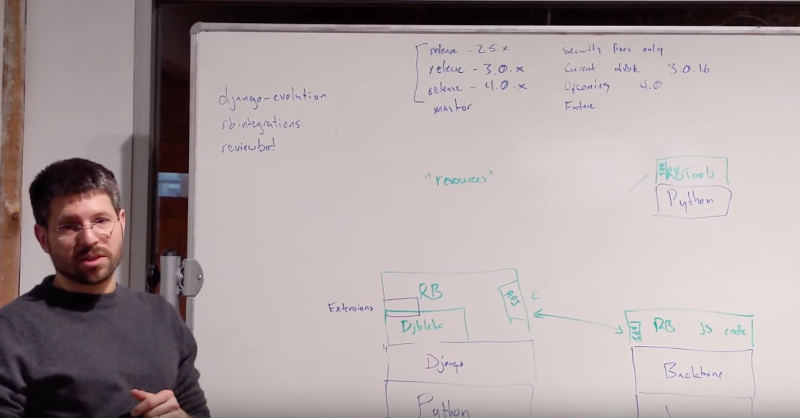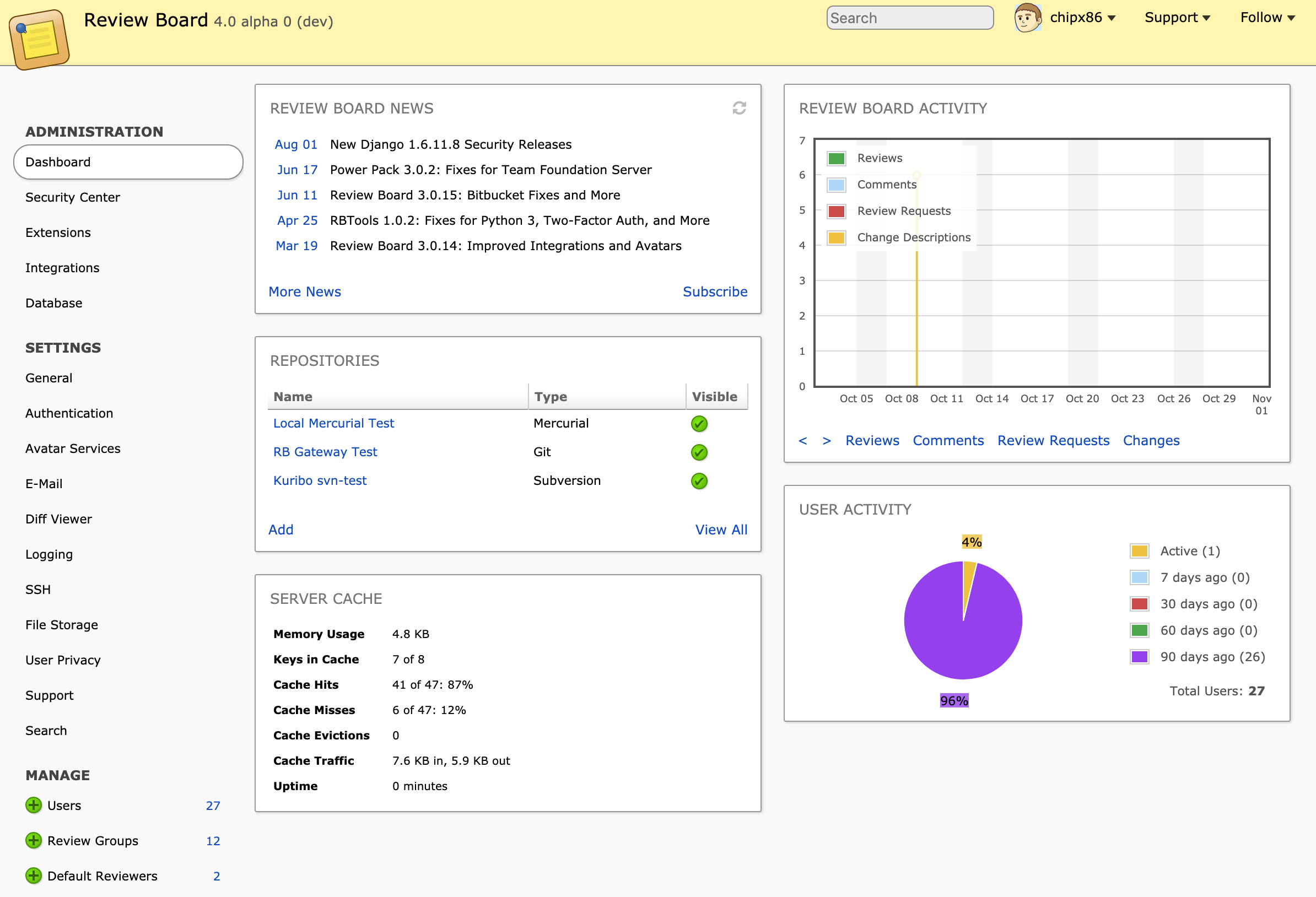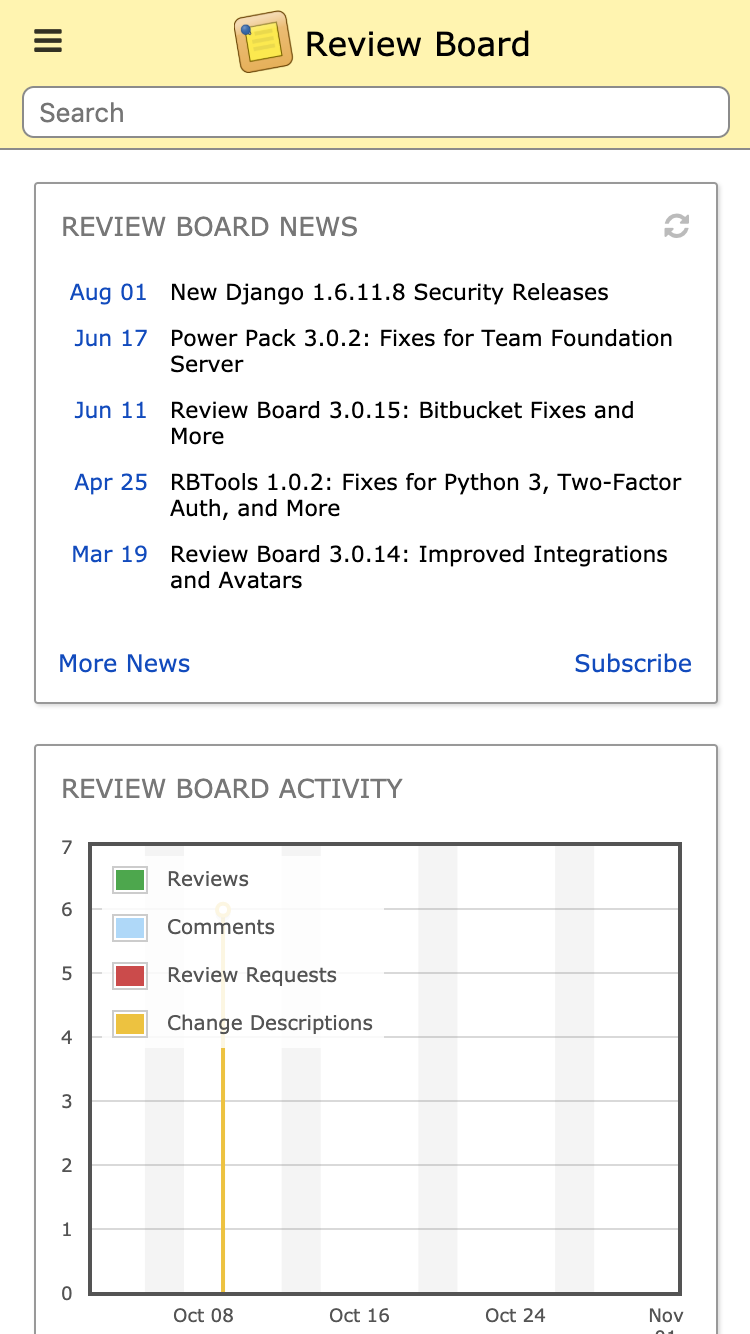Hi everyone, and welcome to this week’s ChangeLog. This week, we want to talk about accessibility improvements for Review Board 4.0, and show you what this semester’s students are working on.
If you want to watch some videos instead of reading a bunch of stuff, jump down to Student Demo Videos!
Accessibility in Review Board
As we revise parts of our UI, introducing new features and designing new CSS Components, we have a goal of improving accessibility. We’re aiming to better support screen readers, improve keyboard navigation, and help people with visual impairments.
This will not be 100% implemented by 4.0, since we do plan to release sometime soon, but we will have laid the groundwork, working toward eventually being fully compliant with the Web Content Accessibility Guidelines (WCAG) 2.1.
There’s a lot that goes into accessibility on the web, but there’s two key areas that are important to get right, and are becoming a core part of our design and CSS component specifications: ARIA attributes and keyboard navigation.
ARIA attributes help screen readers and other assistive technologies understand, navigate, and communicate parts of the UI. They can communicate the intent of a UI component, provide more suitable labels or hints to screen readers, notify as important content updates, and more. They’re important, and we haven’t been good at using them, but they’re now being baked in to the design of any new UI we write.
Keyboard navigation is also very important. Not everyone can or wants to use a pointing device to navigate the UI, and we’ve identified several places where keyboard navigation (and focus presentation) is subpar or flat-out broken. So we’re making this a first-class citizen in new UIs, adding new keyboard shortcuts for important content areas or operations, and fixing cases where navigation is just busted.
To be clear, these aren’t the only focuses — there’s a lot more to the accessibility work than this. Improving accessibility is a long-term goal, and Review Board is a big product. We aren’t holding up 4.0 for this, but rather expect to spend time throughout the 4.0.x release cycle to gradually work on this.
And it’s a current focus of some of our student projects.
Student Demo Videos
In an earlier ChangeLog, we announced our new team of students working on Review Board. The big focuses this semester are on keyboard accessibility and first-time setup improvements.
They’ve been working hard for a month now, and have just completed their first (of three) demo videos. We’d like to show them off.
All videos are uploaded to our YouTube channel. Subscribe to keep up with content as we upload it.
Hannah Lin
Hannah’s been working on implementing keyboard navigation for file attachments, letting users focus on the attachments and control the pop-up menu (for reviewing, updating attachments, deleting, and downloading). That was her first warm-up project.
Her main project for the semester is working on a first-time setup guide, for new Review Board administrators. The goal is to help them get a new server up-and-running fast by walking them through the main setup steps as they progress through the administration UI.
Katherine Patenio
Katherine’s first demo covers some initial bug fixing work for RBTools on Python 3, addressing a problem where --help didn’t always work. She’s fixed this up and added a new layer of unit tests we can build upon.
Her main project for the semester isn’t covered here, but she’s going to be working on the rbt setup-repo command, helping streamline getting a new repository set up with Review Board.
Monica Bui
Monica’s also working on keyboard accessibility. Her focus in this demo is improving the New Review Request page, making sure that all elements can be tabbed to and navigated entirely by keyboard.
Xiaohui Liu
Xiaohui’s first project fixes up tab key navigation in the review request page. Previously, tabbing to fields would prioritize the fields on the right-hand side of review requests (Branch, Bugs, etc.) before the main fields (Description, Testing Done), which wasn’t really intuitive. His fix brings some sanity back to tab orders.
His second project is to implement common support in the UI for keyboard shortcuts, making it much easier for us to bake in better keyboard support on every page with less code to worry about.
Xiaole Zeng
Xiaole’s working on improving help within the product, giving users both a single place to go to when needing to find documentation or other useful information, and finding places within the UI where we can offer better inline guidance. For the latter, she’s working on adding helpful descriptions and documentation links when configuring repositories, based on the selected hosting service or repository type.
Next Week
We’re getting a new RBTools release ready to ship, so you’ll see that soon. We’re also testing 4.0 beta 1, and are getting that beta release on the calendar.
If you want to know more, have any questions, or are curious about anything else, please reach out on our community forum.
We’re also on Reddit (/r/reviewboard), Twitter, Facebook, and YouTube if you want other ways to keep up with Review Board and Beanbag.









